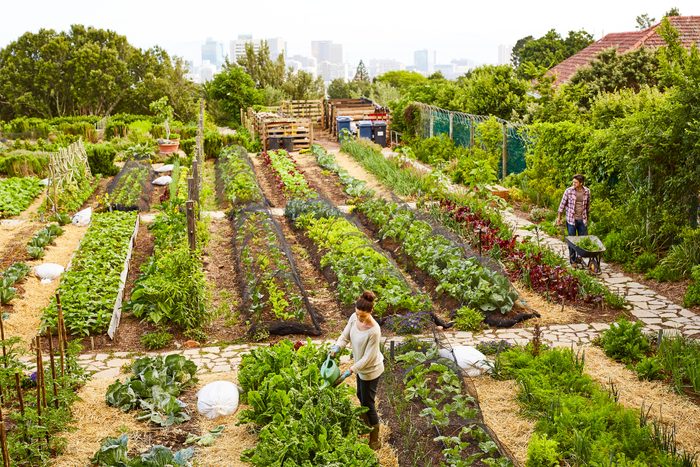What Is an Agrihood and Is It Right for You?

An agrihood is a community with a central farm or garden. Established intentionally or spontaneously, it offers easy access to healthy produce.
When enough human beings dropped their hunter-gatherer ways and formed agricultural communities some 10,000 years ago, it marked the beginning of civilization.
Since then, agricultural communities have taken different forms — tribal villages, feudal fiefdoms and farming cooperatives. Each accepted the prevailing social, political and economic characteristics of the time and region. The underlying purpose has always been the same: To grow enough food for everyone to survive.
In the modern post-industrial era, growers face unique challenges in feeding the world. Suburban sprawl has overtaken lots of what used to be the most fertile ground. Available soil is often over-farmed, requiring frequent fertilization. And water is in increasingly short supply.
Choosing to live in an agrihood is a healthy response to what threatens to become a critical survival issue: food poverty. An agrihood is an oasis in a world in which food is often factory-farmed and processed.
On This Page
What Is an Agrihood?
In broad terms, there are two kinds of agrihoods. In one type, people establish a neighborhood — which may involve moving to a new place — and make physical changes to the infrastructure to support gardening. In the second, community members redefine their relationship with growing facilities that already exist in their area and share responsibility for the operations. Many agrihoods combine both types.
Agrihoods have sprung up spontaneously in some unlikely places, such as inner-city Detroit, where some abandoned properties have been repurposed into gardens. Some small neighborhoods, like my old one Felton, California, established community gardens and became small agrihoods in their own right.
Most U.S. communities identified as agrihoods by the Urban Land Institute are intentional. People live in developments with single-family homes surrounding or surrounded by a central farm. They’re invited to grow and harvest their own organic food.
Examples of Agrihoods
Some 200 agrihoods have been established in the U.S., and more are undoubtedly on the way. The garden is the central focus of the community, though each has its own amenities and agreements among residents.
The Cannery
The Cannery in Davis, California is a 520-home housing development established specifically as an agrihood. Each home is located no less than 300 feet from an open park and a system of trails, bike paths and plazas. These contribute to a sense of easy living.
The adjacent farm, staffed by community members, supplies fresh produce, which everyone can purchase at the Cannery Marketplace.
Harvest
Located in Argyle and Northlake, Texas, Harvest features 3,900 homes on a farm dating to 1877. Many homes are stately urban dwellings, not farmhouses, and the community includes parks, lakes and meeting halls.
The soul of the place is Harvest Farm, where community members are invited and encouraged plant organic gardens and enjoy the healthy and nutritious results.
The Michigan Farming Initiative
The first sustainable urban agrihood in the U.S. was established in Detroit by the nonprofit Michigan Farming Initiative. The two-acre garden supplies 2,000 households within a two-mile radius, as well as local markets and restaurants, with more than 300 organic vegetable varieties.
Volunteers staff the garden, surrounded by occupied and abandoned properties. In the future, the nonprofit plans to convert a long-abandoned building into a resources center and establish a healthy food cafe.
Benefits of an Agrihood
The main reason to move to an agrihood, or help establish one where you already live, is to gain access to fresh, organic produce. Whether you grow your own food, get it from a neighbor or purchase it at the community market, you can be sure the food from your community garden is untainted by commercial agricultural chemicals.
You can benefit in other ways as well:
- Do your own farming: An agrihood provides what people living in modern urban environments don’t have: The opportunity to get their hands dirty and understand what it takes to make a plant grow. A community garden is a holistic learning environment that promotes environmental awareness.
- Eat sustainably: Besides being treated with non-organic fertilizers and pesticides, commercial produce has to be shipped an average of 1,500 miles from farm to market. By keeping food distribution local, an agrihood reduces the fuel consumption required for transportation and refrigeration, which reduces atmospheric emissions.
- Slow down: Most agrihoods include plenty of open green spaces, bike paths and meeting places to encourage a slower, more restful pace of life. A thriving agrihood promotes a healthy lifestyle, and that’s beneficial for everyone.



